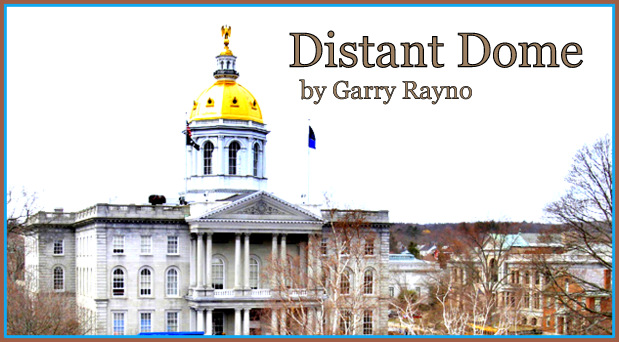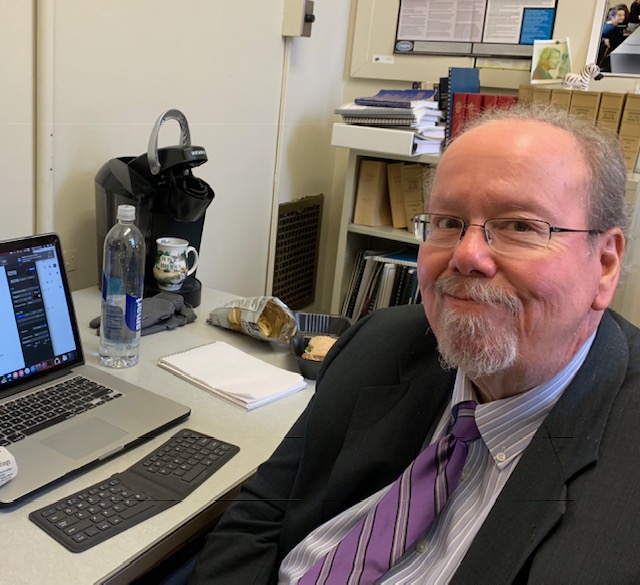
By GARRY RAYNO, Distant Dome
This week may tell what the fate of expanding the Education Freedom Account program will be.
Last week the House and Senate education committees held public hearings on the same day on dueling proposals for expanding the program this year.
The House plan is more lavish than the Senate’s which also reins in the cost of administering the program by the Children’s Scholarship Fund NH and extends the time public school districts would receive the phase-out grants when students leave for the EFA program.
The big money however, is in the income threshold for parents who want their child to have alternative education outside the public school setting.
The House’s bill, House Bill 1665, would raise the threshold from the current 350 percent of the federal poverty level to 500 percent, while the Senate’s would raise the cap to 400 percent.
The 500 percent threshold would open the program that draws funds from the Education Trust Fund to a family of four earning $156,000 and a two-person family or mother and child earning $102,000.
The education fund currently has about a $200 million surplus, but funds the adequacy grants to school districts and charter schools as the foundation of state education aid, as well as other educational costs such as special education, transportation and some of the school building aid.
The 400 percent threshold would open the program to a family of four earning $124,800 and a family of two earning $81,760.
The current threshold would limit income to $109,200 for a family of four and $71,540 for a family of two.
The federal government estimates the median income in New Hampshire for a family of four is $133,447.
The Reaching Higher Education group estimates the 400 percent threshold would cost the state $53.4 million and the 500 percent cap somewhere between $60 million to $70 million.
Currently the program is estimated to cost about $25 million this year but has always exceeded estimates in costing $8 million the first year and $15 million the second year.
The number of students participating has grown from 1,635 the first year to about 4,700 this year, while the average grant has increased from $5,000 the first year to $5,255 this school year.
The vast majority of students participating were not in public schools when they entered the EFA program, but were in private or religious schools or homeschooling programs.
Only about 25 to 30 percent of the participating students have left public schools to seek alternative education settings.
The public hearing in the Senate on the House bill was well attended, while the public hearing on Senate Bill 442 was not, with only advocates opposing the increase testifying.
After that public hearing, the House Education Committee held an executive session on the bill, and voted to recommend the full House kill it, voting 17-0.
The Senate Education Committee has scheduled an executive session to decide pending bills, of which HB 1665 is one, for Tuesday at 1 p.m. in Room 101 of the Legislative Office Building.
What you would usually expect to happen would be the Senate would strip the House plan out of HB 1665 and replace it with the Senate’s plan, and the House would strip SB 442 of the Senate’s plan and replace it with its plan.
And the House and Senate could then negotiate in a conference committee to decide a compromise that might increase the percentage to something like 450 percent.
But by recommending the Senate plan be killed, the House is saying to the Senate it is one or the other not somewhere in between.
The Senate has the leverage, but the House has put the onus on the Senate saying do you have the backbone to go with your own plan after supporters packed the public hearing with supporters of the higher threshold.
That means the Senate will be to blame if parents anticipating the higher threshold are left out and complain and complain and complain publicly about their shortfall.
Another translation is do you want the millions of dollars of Koch Foundation money helping to decide the next election used against you in a primary or the general election, along with the DeVos organization’s wealth and others supporters of killing public schools like the Waltons and other organizers of the Children’s Scholarship Fund.
“Do you have the courage to do what you believe is right?” is the question the House leadership is asking Senate President Jeb Bradley and other Republicans in the Senate.
When the EFA program was approved as part of the 2021-2022 biennial budget because it did not have the votes to pass as a stand-alone bill, the threshold for participation was 300 percent of the federal poverty level, and the very next year — last year — it was increased to 350 percent.
The Senate followed that with another 50 percent increase to 400 percent, and also in light of the state’s softening revenue picture.
After several years of surpluses in the hundreds of millions of dollars due to the influx of federal COVID rescue and relief money that fueled record breaking business profits largely for multinational corporations, the trend is in the opposite direction.
Business taxes were $36 million below estimates for March, which is one of the larger business tax collection months.
And with three-quarters of the fiscal year already complete, the Education Trust Fund has a $15.2 million deficit against the revenue plan, due to business taxes as well as lesser than anticipated revenue from the real estate transfer tax and the tobacco tax.
The Department of Revenue Administration noted that businesses are lowering their anticipated payments indicating a softening in profits and refunds are significantly higher.
That essentially says the good times are over for a while.
The Senate also lowered the Children’s Scholarship Fund’s percentage for administering the program from 10 to 8 percent, and acknowledged the program is drawing money out of public schools by extending the phase-out payments for losing students to the EFA program.
The scholarship fund would receive about $2.5 million this year for administering the program, and $2 million at 8 percent.
But now for a little dose of reality: neither the House nor Senate has voted on anything yet.
The House could vote down the Education Committee’s recommendation, but that is unlikely, but it could happen if a deal is struck behind the scenes out of the public’s view.
And the Senate Education Committee has not made any recommendation on House Bill 1665 yet, but the good money is on the usual maneuver of putting their plan on the bill in place of what the House passed.
This is the opening salvo of the EFA expansion fight and there will be more to come.
The program receives a great deal of attention for representing only 3 percent of all the state’s public school aged students.
However, the culture war is not about numbers, but about the end game and how you get there when the majority of people disagree with you.
Garry Rayno may be reached at garry.rayno@yahoo.com.
Distant Dome by veteran journalist Garry Rayno explores a broader perspective on the State House and state happenings for InDepthNH.org. Over his three-decade career, Rayno covered the NH State House for the New Hampshire Union Leader and Foster’s Daily Democrat. During his career, his coverage spanned the news spectrum, from local planning, school and select boards, to national issues such as electric industry deregulation and Presidential primaries. Rayno lives with his wife Carolyn in New London.






